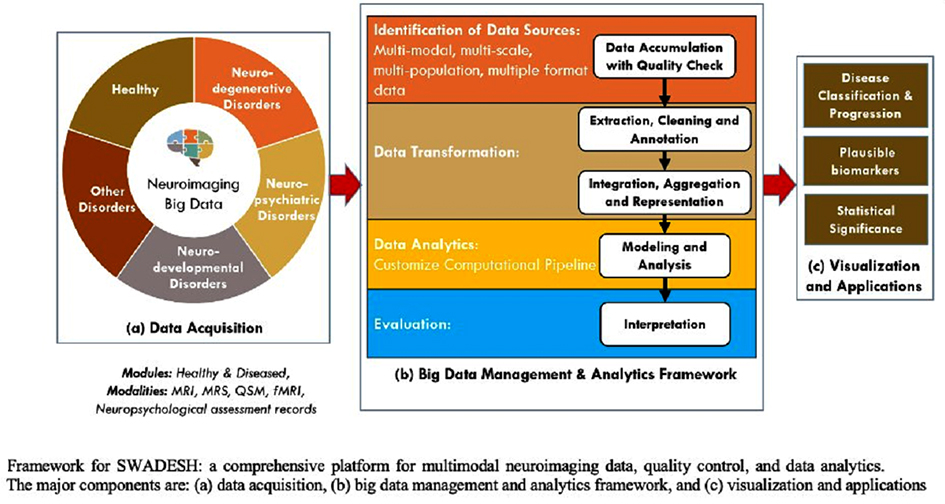Important Facts For Prelims
Project SWADESH
- 29 Nov 2021
- 3 min read
Why in News
Recently, the Department of Biotechnology (DBT)-National Brain Research Centre (DBT-NBRC) has developed Project SWADESH, for managing Neurological disorders.
- NBRC is the only institute in India dedicated to Neuroscience Research and Education.
Key Points
- About:
- It is the first large-scale multimodal neuroimaging database designed specifically for the Indian population with big-data architecture and analytics for various disease categories under one platform.
- It proposes a big-data architecture that manages and analyzes six modules, namely neurodegenerative [AD, Mild Cognitive Impairment (MCI), and Parkinson’s disease (PD)], neuropsychiatric (schizophrenia and bipolar disorder), neurodevelopmental (autism and epilepsy), Covid-19-related disorders, other disorders, and healthy subjects.
- It is supported by JAVA-based workflow environments and Python. Backed by a dedicated storage system, it provides quality control, data analysis reports, and data backups.
- Python and Java are both computer programming languages.
- Significance:
- It will be useful in conducting multimodal brain studies to understand Alzheimer’s disease and several neurological disorders.
- Its development will facilitate the integration of multi-site data and collaborative research worldwide.
Neurological Disorders
- Meaning:
- Neurological disorders are diseases of the central and peripheral nervous system.
- In other words, the brain, spinal cord, cranial nerves, peripheral nerves, nerve roots, autonomic nervous system, neuromuscular junction, and muscles.
- Neurological disorders are diseases of the central and peripheral nervous system.
- Types:
- Non-Communicable Neurological Disorders: Stroke, Headache disorders, Epilepsy, Cerebral palsy, Alzheimer’s disease and other dementias, Brain and central nervous system cancer, Parkinson’s disease, Multiple sclerosis, Motor neuron diseases, and other neurological disorders.
- Communicable Neurological Disorders: Encephalitis, Meningitis, Tetanus.
- Injury-related Neurological Disorders:
- Traumatic brain injuries, Spinal cord injuries.
- Indian Scenario
- Neurological disorders contribute 10% of the total disease burden in India.
- There is a growing burden of non-communicable neurological disorders in the country, which is mainly attributable to the ageing of the population.
- The contribution of non-communicable neurological disorders to total DALYs (disability adjusted life-years) in India doubled from 4% in 1990 to 8·2% in 2019, and the contribution of injury-related neurological disorders increased from 0·2% to 0·6%.
- Burden, high blood pressure, air pollution, dietary risks, high fasting plasma glucose, and high body-mass index are the leading contributors for Neurological Disorders in India.







